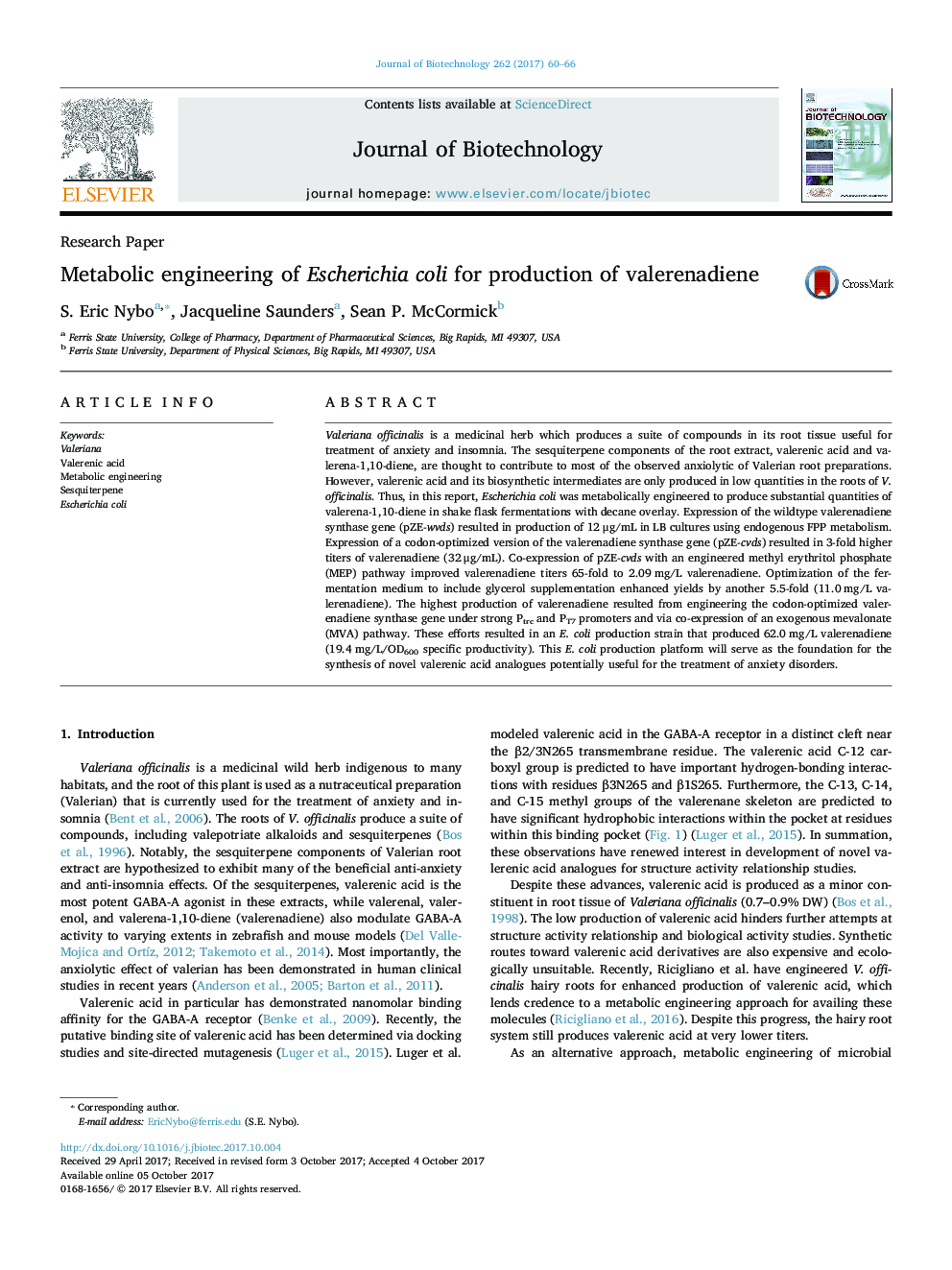| کد مقاله | کد نشریه | سال انتشار | مقاله انگلیسی | نسخه تمام متن |
|---|---|---|---|---|
| 4753500 | 1416981 | 2017 | 7 صفحه PDF | دانلود رایگان |

- Escherichia coli was engineered to produce 62Â mg/L valerenadiene in shake-flask cultures.
- Codon-optimization of valerenadiene synthase enhances productivity three-fold.
- Valerenadiene production was compared using engineered MEP and MVA pathways.
Valeriana officinalis is a medicinal herb which produces a suite of compounds in its root tissue useful for treatment of anxiety and insomnia. The sesquiterpene components of the root extract, valerenic acid and valerena-1,10-diene, are thought to contribute to most of the observed anxiolytic of Valerian root preparations. However, valerenic acid and its biosynthetic intermediates are only produced in low quantities in the roots of V. officinalis. Thus, in this report, Escherichia coli was metabolically engineered to produce substantial quantities of valerena-1,10-diene in shake flask fermentations with decane overlay. Expression of the wildtype valerenadiene synthase gene (pZE-wvds) resulted in production of 12 μg/mL in LB cultures using endogenous FPP metabolism. Expression of a codon-optimized version of the valerenadiene synthase gene (pZE-cvds) resulted in 3-fold higher titers of valerenadiene (32 μg/mL). Co-expression of pZE-cvds with an engineered methyl erythritol phosphate (MEP) pathway improved valerenadiene titers 65-fold to 2.09 mg/L valerenadiene. Optimization of the fermentation medium to include glycerol supplementation enhanced yields by another 5.5-fold (11.0 mg/L valerenadiene). The highest production of valerenadiene resulted from engineering the codon-optimized valerenadiene synthase gene under strong Ptrc and PT7 promoters and via co-expression of an exogenous mevalonate (MVA) pathway. These efforts resulted in an E. coli production strain that produced 62.0 mg/L valerenadiene (19.4 mg/L/OD600 specific productivity). This E. coli production platform will serve as the foundation for the synthesis of novel valerenic acid analogues potentially useful for the treatment of anxiety disorders.
Journal: Journal of Biotechnology - Volume 262, 20 November 2017, Pages 60-66